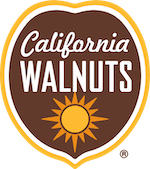 Let’s talk about omega-3
Let’s talk about omega-3
Guest blog from dietitian Azmina Govindji RD @AzminaNutrition
Most foods that contain fat have a different combination of fatty acids. One of these is omega-3, which can be classified as alpha-linolenic acid (ALA), eicosapentaenoic acid (EPA), and docosahexaenoic acid (DHA). They all have important functions in the body, and as your body cannot make omega-3 itself it is essential that you have a regular supply in your diet.
I thought omega-3 came from fish – can you get it from a vegan diet?
The richest source of EPA and DHA is oily fish, and you can’t obtain these important omega-3 fatty acids from plant-based foods. So if you’re on a vegan diet, you need to find ways to get enough omega-3 fatty acids – not so easy when you’re cutting out animal foods.
The good news is you can increase levels of EPA or DHA by consuming more ALA or taking a microalgae-based supplement. ALA can easily be obtained by vegetarians and vegans through consuming more plant-based foods that are rich in ALA. California Walnuts are great sources of the omega-3 fatty acids ALA, as are flaxseeds, walnut and rapeseed oils, hemp and chia seeds – all of which can be considered particularly nutritious foods within a vegan diet.
If you’re looking for some more information, the British Dietetic Association recently published a comprehensive feature about vegan diets which clearly demonstrates how adding a few walnut halves can enrich your meal with omega-3 fatty acids, be it soup, pasta or even a sandwich.
So why do we need omega-3 in the first place?
Research has shown that consumption of omega-3 ALA can contribute to the maintenance of normal blood cholesterol levels*. This is one of the reasons California Walnuts have been given the heart healthy seal of approval from HEART UK**, as California walnuts are the only nut to contain significant amounts of omega-3 ALA – 2.7g per 30g portion (roughly a handful) in fact***. That compares favourably to a portion of other sources of omega 3-ALA such as chia seeds (1.8g per tbsp), rapeseed oil (1.1g per tbsp) and hemp seeds (0.9g per tbsp)***.
Ok you’ve convinced me…so how do I get more walnuts in my diet?
California Walnuts are really quite versatile so there are many ways to use them. Here’s 5 simple ways I like to enjoy them:
- Waste-not bananas: Don’t throw away bananas that have seen better days. Freeze them in chunks for at least an hour. Then blitz them with oat or soya drink till creamy. Spoon into a glass and top with crushed walnuts and blueberries.
- Hey presto walnut pesto: simply put walnuts, grated vegan cheese alternative, a tablespoon of fortified nutritional yeast flakes, lemon juice, basil leaves, coriander leaves, garlic and black pepper into a food processor and create a vegan pesto sauce in seconds. Add a little water if needed.
- Nutty avocado salad: Mix your favourite salad leaves with chunks of red apple and toss in a citrus dressing. Top the salad with sliced avocado and toasted walnut halves.
- Kale crisps: simply wash and pat-dry curly kale and roast in the oven with a little seasoning and rapeseed oil for about 10 minutes. Scatter with walnut halves and dried rosemary and cook for another 10 minutes. Enjoy as a flavoursome snack.
- Fragrant rice with walnuts: Cook brown basmati rice with stock, turmeric, cumin seeds, cinnamon sticks, chilli and garlic. Stir in diced red peppers, crushed walnuts and canned sweetcorn while still warm. Garnish with fresh coriander leaves.
There are loads of tasty ideas for using walnuts here on the website too.
*https://www.gov.uk/government/publications/great-britain-nutrition-and-health-claims-nhc-register
**https://www.heartuk.org.uk/healthy-living/approved-products#cw
***https://fdc.nal.usda.gov/fdc-app.html#/food-details/1100553/nutrients


 Let’s talk about omega-3
Let’s talk about omega-3

